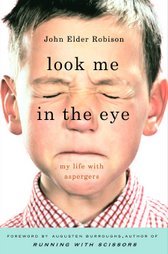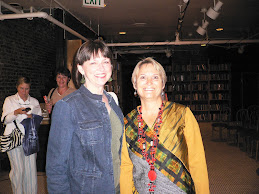The first 2 paragraphs of our reading assignment (about 90 pages this week) surprised me because they describe a plot as “what happens in the story.” It’s the events that take place and has nothing to do with theme or meaning or how the characters feel – only their actions. They use this example from J.D. Salinger’s The Catcher in the Rye: An adolescent boy is thrown out of prep school, makes his way back to New York, confronts various people, and has a nervous breakdown. That’s it. Those are the main plot points.
There are specific events that occur to move those main plot points forward. A good plot surprises – not with cheap twists and silly reversals, but with a variety of possible actions resulting from a variety of complex human emotions. The writer’s challenge is to make the plot twists natural and come from the characters needs and desires. They must have proper motivation and not be arbitrary.
Conflict is the fuel that drives the plot forward. Without it, there is no story. There are two kinds of conflict – internal and external. Internal conflict is a personality flaw that prevents a character from achieving whatever goal he’s after. Pride is a good example. An external conflict is like an avalanche that blocks the road and prevents the character from going somewhere. External conflicts can be symbolic representations of internal conflicts. The example given is of a man who says he wants to meet his father but can’t because of a critical meeting that could save his failing business. The failing business could be caused by his pride which is keeping his father from him.
Elements of a plot:
1. BEGINNING
· Introduction
Introduces: characters, core conflict, setting, tone
· Antecedent Action
Explanation of events prior to the opening of story to provide clarity. This could include background information about the characters or the situation.
2. MIDDLE
· Suspense
Suspense can be created by showing the audience something in such a way that they know it will become a major factor later (for example, showing a destroyed spaceship in Alien foreshadows the trouble this crew will face).
· Conflict
The establishment of a genuinely felt conflict creates a natural suspense quotient. The higher the stakes concerning this outcome, the more the reader is involved.
· Reversal
This is the dramatic turning point. It occurs when the protagonist discovers that the outcome of all his/her plans is not what he/she had expected. It can occur by coincidence, but is better if it occurs by design of other characters, or as the result of something the protagonist did. An example of the latter: Early in the story the hero is a cad and unceremoniously dumps his girlfriend. Later he grows and becomes a nice guy, meets a girl, plans to get married. Right before the wedding, the dumped ex-girlfriend returns to tell the new girlfriend some awful secret about the hero's past, threatening the pending nuptials.
· Climax
This is not the end of the story, but rather that point in the story at which the rest of the events become inevitable. Technically, it is the end of the middle.
3. END
· Catastrophe and Dénouement
The catastrophe in tragedy/drama is where the protagonist or someone close to him dies. More commonly, it is the point in the story where it looks as if all is lost. The denouement is the tying up of loose ends.
Scenes
All of the plot elements are made up of scenes. There can be thousands of scenes in a novel. The scenes can be composed of dialogue, action and/or narration. Each scene has its own beginning, middle and end. How you write scenes and string them together depends on what you are writing.
What makes a scene memorable are those moments so powerful they catch the reader off-guard and stay in their memory long after the book is back on the shelf. The writers job is to make even the most predictable scene an unexpected experience for the reader by elevating it through fresh dialogue, unusual situations or a unique and wonderful voice.
They advise writers who have sudden ideas for unique scenes in off-beat settings to go ahead and write them. Later you can ask the crucial questions. Why is it here? What do I hope to accomplish with it? How can I best utilize this odd setting? You can then transform the great idea into a fully realized scene, rich with nuance, texture, character and theme.
Though every scene has a purpose or focus, the best scenes achieve this subtlety through misdirection. The reader is looking at one hand while you manipulate them with the other. This is especially important if the scene exists merely to deliver information.
A scene is like a single member of a family. It is loved for its own individuality, but its greatest power is its contribution to the larger group. First concentrate on the elements that make the scene work on its own as an isolated mini-story, then judge each scene’s effectiveness by how much it contributes to the whole work.
Focus
A scene should do two or more of these four things: 1. advance the plot, 2. develop the characters, 3. illustrate the theme, 4.contribute to suspense. They recommend reading each scene again when you’re finished and completing the following sentences:
1. The Plot Focus:
The purpose of this scene is to _____________
2. The Character Focus:
When the reader finishes this scene, they should feel __________
3. The Theme Focus:
When the reader finishes this scene, they should think ____________
4. The Suspense Focus:
When the reader finishes this scene, they should wonder _________________
If you can’t complete at least two of these sentences to your satisfaction, the scene either needs work or needs to be cut.
Look for Part 2 soon and as always, remember this is just a synopsis of about 90 pages of material.
Thursday, March 20, 2008
Subscribe to:
Post Comments (Atom)










5 comments:
The rigor of short story writing requires that scenes stand on (stolen from some other writer) a three-legged stool: Plot, Character, Setting. Plot would include suspense and furthering the action, character, and setting. In good stories I find theme to be intrinsic to all three. That's not to say the writer isn't thinking of it, just that s/he shows it through the other means.
Good run-down, AW!
Ooh, this is very helpful! The purposes of each scene especially. I'm printing it out to use as I polish my wip. Thanks!
This is very, very informative!
Thanks for pulling all these elements together.
I need to read more about internal conflict. A critique group member is writing a story where the tension is based on this. I want to know more so I can review it better.
I learned a lot from this post. Thanks AW!!
Great information, AW, thanks for sharing... now let's see if I can answer all of those questions...
This really is helpful, and I find myself reading and rereading your posts.
I was lucky enough to win a literary critique in a novel writing competition last year, and I got the advice you give here -- that anything that doesn't forward the narrative or contribute to its development, doesn't make the grade and should be trimmed out. I just need to be reminded of this as often as possible!
Post a Comment